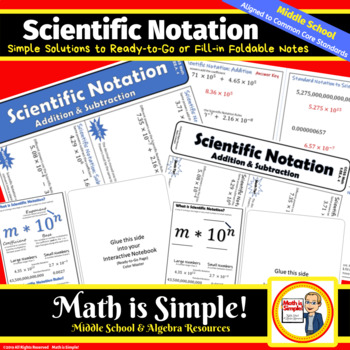- PDF
Description
Your purchase includes:
•Two (2) different versions of Scientific Notation with Addition & Subtraction Foldable Notes! (Fill in or Ready-to-Go Notes)
•The Foldable Notes are in color or an ink-saving option.
•Print the notes back to back where they can fold nicely into students' interactive notebooks.
The foldable notes are designed to introduce Scientific Notation with multiple examples of how add and subtract. (Answer Key is provided).
The lesson will take between 15-30 minutes depending on how you present the foldable notes (chart filled in or blank).
The foldable notes are designed for direct instruction by the teacher or as an independent activity.
Photocopy Instructions
To make copies of the foldable notes on a copy machine:
*print the two pages you prefer (color or ink saving option and either ready to go notes or fill in notes).
* Line up the dashed lines on each page.
* Of the two sheets, the first will be right side up and the second page will be upside down.
*Select the back to back button on your copy machine and print.
*Your final copy with be able to be folded down the dotted line and create your AWESOME FOLDABLE NOTES for your STUDENTS!!
For more resources visit our TpT Store: Math is Simple! Resources
Find us on Instagram





